Everything you want to know about the North Pole starts with Christmas. Why? Because the two are synonymous—an inextricable link forged over hundreds of years of myth and childhood innocence. Even as adults, the North Pole conjures images of a jolly old man taking care of his reindeer in the off-season.
Of course, there’s a lot more to the North Pole than good Christmas cheer. In all reality, it is a hauntingly beautiful, inhospitable desert—a polar desert to be more precise. It’s miles and miles of craggy, pockmarked ice. The wind, unblocked by any natural vegetation, swirls thousands of tiny ice crystals into the air, a miasma of diamonds on a desolate landscape.
Throughout the winter, the average temperature is -40°F but it’s known for dipping down into -80° to -90° temperatures as well. What is there to know about the North Pole, beyond its bleak and blindingly white landscape? As it turns out, quite a lot. Like many deserts on this planet, the North Pole has secrets of its own.
1. There is No “Fixed” North Pole

Magnets hold paperwork against refrigerators but they get much stronger than that. Let’s discover the strongest magnet known to man.
©ShutterStockStudio/Shutterstock.com
There is a “fixed” magnetic North Pole, which is the same as pointing at an unanchored houseboat on a sizeable pond and saying, “There’s my home.” Sure, that’s your home, however, without an anchor, your home could be on the west side of the pond one week and on the east side of the pond the next.
What we mean by “no fixed” North Pole is that the Earth wobbles on its axis. If you reach out and spin a desk globe, the earth invariably spins on its axis, with no sign of wobble unless you spin it so hard it falls over. The real earth doesn’t spin that smoothly. Since the recording of the earth’s wobble began, the axis is no longer in the same position. It’s like a spinning top that’s losing its momentum, beginning to wobble ever so slightly.
The terrestrial North Pole is as close to what we might consider “fixed”. But that’s only because it’s more of a location on a map than anything else.
2. There is Life in the North Pole

©Andrew Astbury/Shutterstock.com
Of all the things we know about the North Pole, this should be the least surprising. No matter the environment, it seems that life will always find a way. The nearest, permanent habitation is a shade over 500 miles away from the geographical North Pole.
While nothing “lives” directly at the North Pole, animals wander throughout the region from time to time. Polar bears, arctic foxes, reindeer, arctic hares, arctic ringed seals, and northern fulmar frequent the region. Microbes live (to some degree or another) within the ice as well.
Beneath the ice, there are shrimp, sea anemones, and a variety of crustaceans. Whales, such as the Bowhead Whale, may move through the area from time to time as well. While people don’t live in the North Pole, we do set up stations there and inhabit them in the summer for short periods. Keep in mind, animals don’t live here, outside of the micro-organisms trapped in the ice. They merely move through the area from time to time.
3. There is No Land Beneath the Arctic
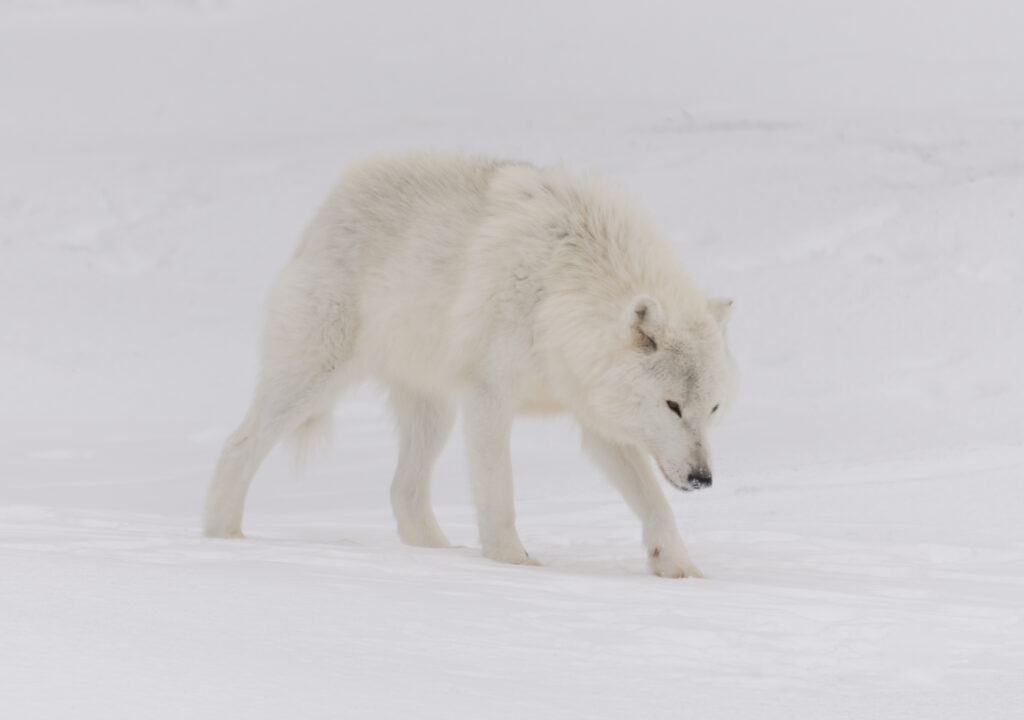
Arctic Wolf
just passing through.
©Manuel Lacoste/Shutterstock.com
One thing we know about the North Pole is that it’s unlike Antarctica and the South Pole. The South Pole does sit on a landmass, a topography whose history is an unfamiliar and broken one, outside of geological understanding.
The North Pole, however, is nothing more than a gigantic sheet of ice that expands drastically in the winter and shrinks, just as drastically, in the summer. If you were to drill down at the most northern point of the North Pole, you would only hit the Arctic Ocean when breaking through.
4. It’s Warmer at The North Pole Than it is At the South Pole
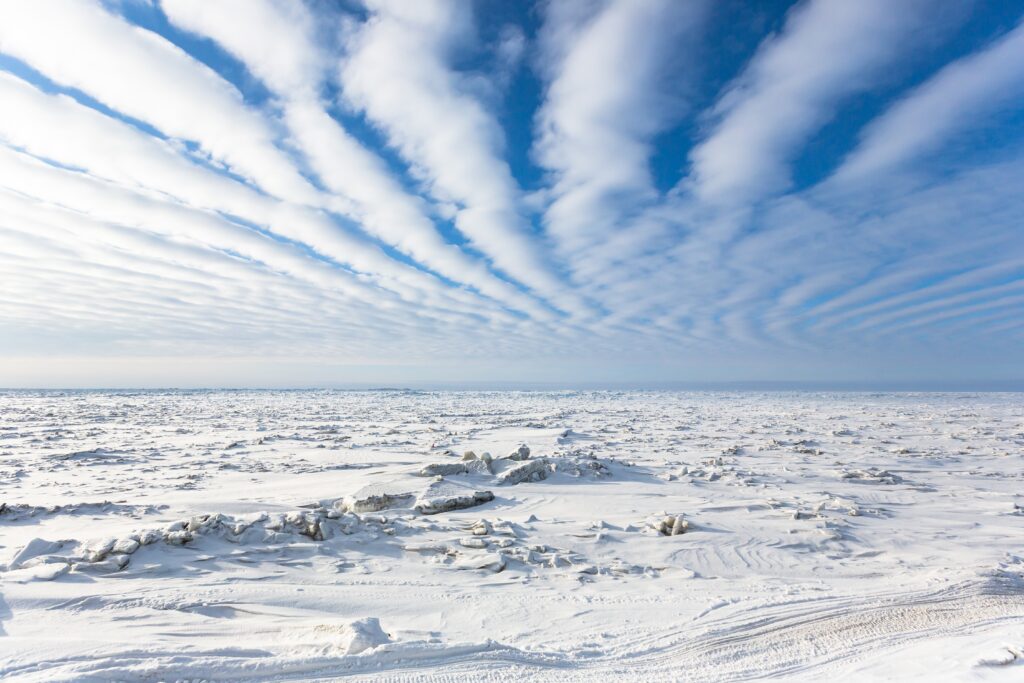
An aerial photo of the frozen sea in the Arctic Circle near Utqiagvik, Alaska.
©iStock.com/Wirestock
We know that the North Pole is warmer than the South Pole, and it’s not even close. It’s much warmer. In Greenland, there is a weather station that is the northernmost weather station in the world. During the summer, that station records temperatures that sometimes reach as high as 32°F.
At the South Pole, however, the highest temperature ever recorded was 9.9°F. The reason is a simple one when you stop and think about it. The North Pole, as a large mass of ice, sits at sea level. The ice at the South Pole, on the other hand, rests on top of a large landmass, so it’s elevated, sometimes very elevated depending on where.
5. Months of Darkness and Light
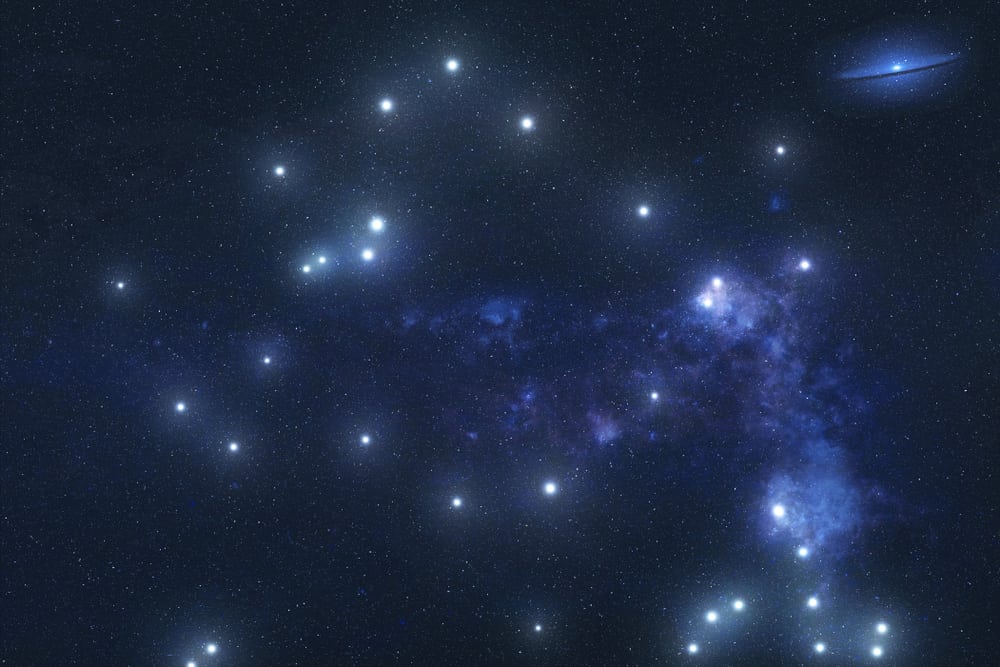
Constellations in the night sky.
©Pike-28/Shutterstock.com
If you’re looking for a place to watch the sunset and sunrise, the North Pole is not the best spot. It only experiences a single, full sunrise and sunset, in the March and Spring equinox respectively. From what we know of the North Pole and have experienced, the sun never sets in the summer and never rises in the winter.
It’s much like places in the northern parts of Canada and Alaska, except it’s even more extensive. Usually, when we have people at the North Pole for scientific analysis and exploration, it’s during the summer, when the sun never sets.
6. No Country Owns the North Pole
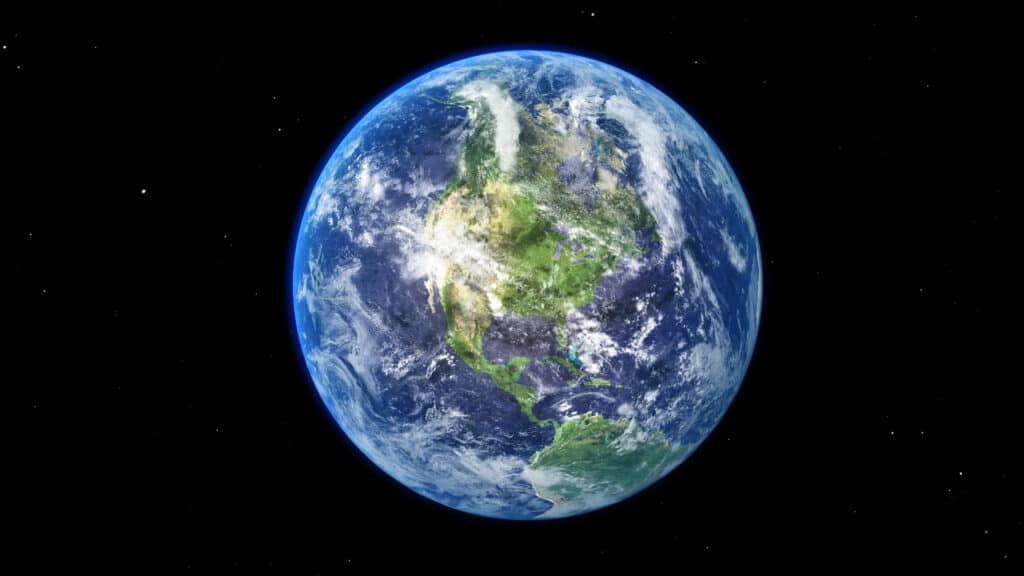
Planet Earth
©iStock.com/Thaweesak Saengngoen
Unfortunately, one of the things we know about the North Pole is that it’s a controversial place. When it comes to drilling rights, the countries that share a border with the North Pole are allowed to go after the natural resources there up to 200 miles from their borders.
However, Russia, in a weird attempt to claim the North Pole as its own, sent a submarine to the bottom of the Arctic, below the North Pole ice mass. Once in position, they planted a Russian flag and claimed the territory. The United Nations laughed them right back out of the Arctic water but that hasn’t ended the argument.
7. The North Pole is a Desert (Of a Sort)
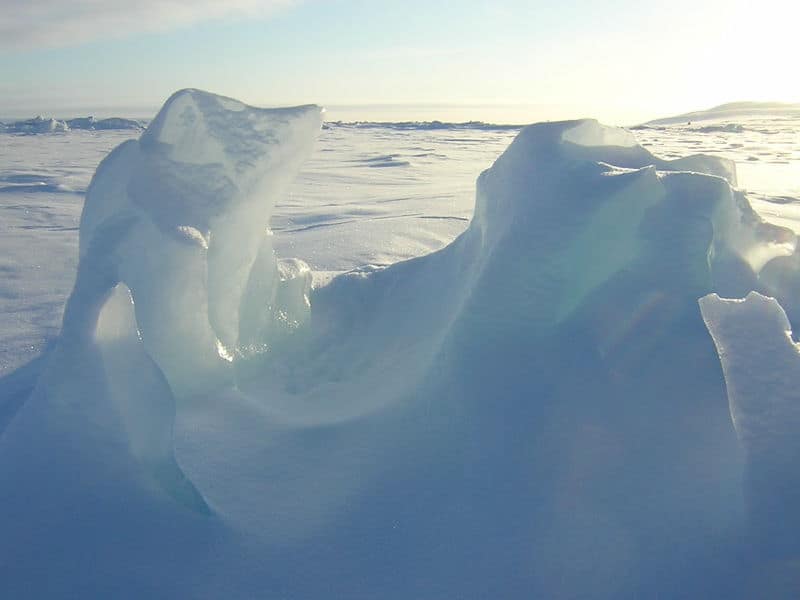
Unique ice formation
©Arctichistorian01 / CC BY 3.0 – License
Of all the things we know about the North Pole, the word “desert” is probably the least used. When people think of deserts, they think of places like Death Valley, California, or the Sahara Desert. However, the North Pole qualifies as a desert. It has an arid climate and a very low precipitation rate.
Like deserts, living organisms are sparse there, traveling through more than actually living there. The North Pole, as a polar desert, mostly experiences “precipitation” in the form of fog.
8. Time is Weird At the North Pole

Clock at the top of the City Hall of Santa Ana city, El Salvador.
©iStock.com/edfuentesg
It’s not weird like a horror movie weird. It’s weird in the sense that all lines of longitude converge at the North Pole, meaning that it is all time zones. If you stand in the North Pole and choose a random time zone, you are correct 100% of the time.
If you bring a smartphone up there, it might experience trouble. We know about the North Pole and its all-encompassing time zones. What we don’t know is what time it is at any given point of the day because it can be any time. Conflate that with the fact that the sun never sets for 6 months and never rises for 6 months and it might be enough to drive you a little crazy.
9. There’s More Than One North Pole

Santa Claus Cane Outside of North Pole, Alaska
©Erika Bisbocci/Shutterstock.com
Okay, this isn’t technically about the North Pole. But, at the same time, it kind of is. There is a North Pole in Alaska and a North Pole in New York. The North Pole in New York is a theme park and, you guessed it, it’s all about Santa Claus and everything Christmas.
North Pole, Alaska is not a theme park, however. It’s an actual city in Alaska, incorporated, with everyday residents just like any other city on the planet. Of course, North Pole, Alaska is very aware of its name, and the town exists in a seemingly neverending Christmas. But, it’s still a place you can live, go to work, buy a home, and do everything else that comes with living in a town.
10. Everything Faces South

Compass resting sideways on a map.
©Triff/Shutterstock.com
This one is kind of obvious and kind of bizarre at the same time. If you built a small town, completely encircled by gigantic ice walls, all of those walls will always face south. No matter what direction you turn in, if you face away from the wall, you’re facing south.
Not only that, but time zones are simply a step away, as described above. All you have to do is walk around your newly constructed walls, in a complete circuit, and you will pass through time in seconds. It’s weird because you’re not traveling through time but you kind of are at the same time.
Final Thoughts On Everything You Ever Wanted to Know About the North Pole
We know a lot about the North Pole, even though we were late to the party, having explored the South Pole first. It’s a strange, beautiful, and inhospitable place, at least for most creatures on the planet. While there is permanent life there, it is mostly in the form of microorganisms or underwater sea life.
Warm-blooded animals are simply passing through when they encounter its harsh environment. The North Pole is also a mystical place, for children that is. For some adults as well. It’s a place where you can see the northern lights—where time is funny and every direction is the same. It’s one of only two places you can go where you get the extreme of strangeness, with everything flipped on its head.
The photo featured at the top of this post is © Stephen Hudson / CC BY-SA 3.0 – License / Original
Thank you for reading! Have some feedback for us? Contact the AZ Animals editorial team.






